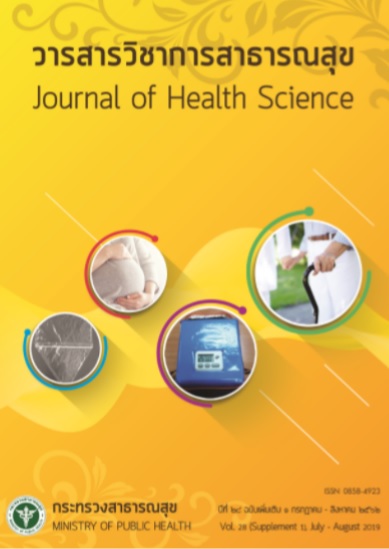Susceptibility on Temephos of Aedes aegypti Larva in Lower Northern, Thailand, 2015
Keywords:
susceptibility, temephos, Aedes AegyptiAbstract
The control of Aedes Aegypti, a vector of dengue hemorrhagic fever (DHF), is currently an important prevention and control policy. One chemical approach is to control the mosquito larvae by using themephos-coated sand. Inappropriate use of the sand is a mian cause of chemical resistance. The objective of this study was to assess the susceptability of the mosquito larvae toward themephos. It was conducted in both urban and rural areas of 5 lower Northern provinces: Phitsanulok, Uttaradit, Sukhothai, Tak and Phetchaboon during May – August 2015. A sisceptability test kit was used to measure the levels of lithal concentration 50 (LC50) and resistance ratio (RR50) at the concentration of 0.02 mg per litre of themephos. The results showed variations of among five stains of Aedes Aegypti larva in urban and rural areas with the LC50 range of 0.00201-0.01160 mg/l. The resistance ratio also showed variation: RR50 = 0.73 in Phitsanulok, 2.15 in Uttaradit, 2.32 in Tak, 2.50 in Phetchaboon, and 2.70 in Sukhothai in the urban areas; and 0.87 in Sukhothai, 0.91 in Tak, 1.08 in Phitsanulok, 1.27 in Uttaradit, and 4.26 in Phetchaboon in the rural. Thus, the mosquitoe larvae in urban and rural areas of lower Northern provinces had developed a low level of themephos resistance. The data could be useful for selecting appropriate insecticides and the suitable concentration to be used for vector control.
Downloads
Downloads
Published
How to Cite
Issue
Section
License
Copyright (c) 2019 Journal of Health Science - วารสารวิชาการสาธารณสุข

This work is licensed under a Creative Commons Attribution-NonCommercial-NoDerivatives 4.0 International License.







